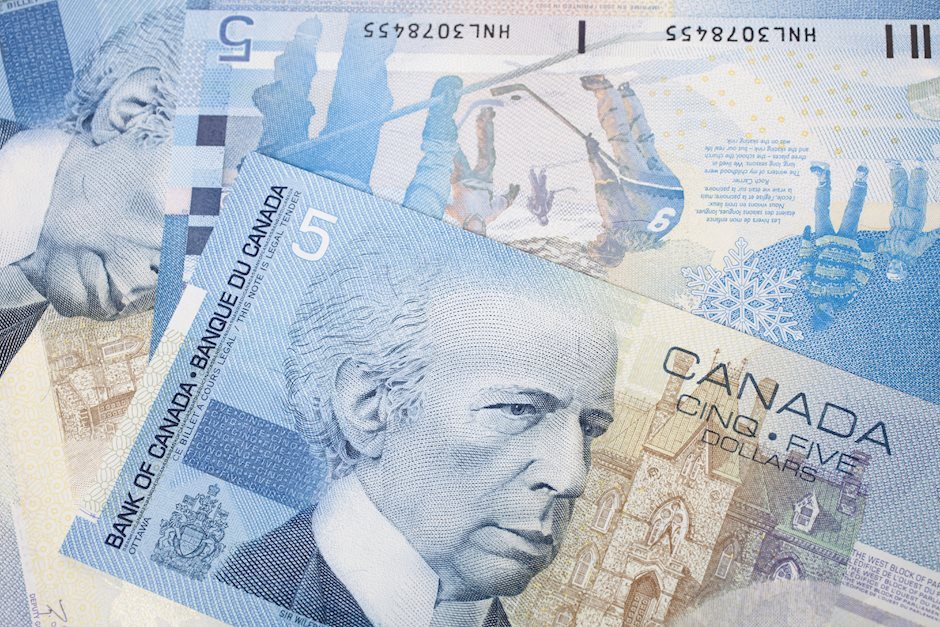USD/CAD Technical Forecast: At make or a break below 1.3600 ahead of Fed Powell’s speech
- USD/CAD hovers near 1.3600, the potential breakdown region of the Broadening Triangle chart pattern.
- Investors keenly await Fed Powell’s speech at the JH Symposium.
- The Canadian Dollar will dance to the tunes of the monthly Retail Sales data for June.

The USD/CAD pair falls back below 1.3600 after a short-lived pullback move to near 1.3616 in Friday’s European session. The Loonie asset weakens as the US Dollar (USD) struggles to hold Thursday’s recovery move, driven by better-than-estimated preliminary United States (US) S&P Global PMI for August.
The US Dollar Index (DXY), which tracks the Greenback’s value against six major currencies, falls to near 101.30. The Greenback is expected to remain on the sidelines, with investors focusing on the Federal Reserve (Fed) Chair Jerome Powell’s speech at the Jackson Hole (JH) Symposium.
In the JH event at 14:00 GMT, Jerome Powell is expected to provide fresh guidance on interest rates and the economic outlook. The Fed is widely anticipated to start reducing its key borrowing rates from the September meeting but traders are split over the likely size of interest rate cuts.
Meanwhile, the Canadian Dollar (CAD) will be influenced by the domestic monthly Retail Sales data for June, which will be published at 12:30 GMT. The Retail Sales data, a key measure of consumer spending that prompts inflationary pressures, is estimated to have declined consequently. The consumer spending measure is expected to have contracted by 0.3% after dropping 0.8% in May.
Lower sales at retail stores point to a decline in the purchasing power of households, which would prompt expectations of more Bank of Canada’s (BoC) interest rate cuts this year.
USD/CAD is on the verge of delivering a breakdown of the Broadening Triangle chart formation on a daily timeframe. The asset hovers near the horizontal support of the above-mentioned chart pattern below 1.3600.
The overall trend is bearish as it trades below the 200-day Exponential Moving Average (EMA), which trades around 1.3630.
The 14-day Relative Strength Index (RSI) oscillates in the bearish range of 20.00-40.00, suggesting a firm downside momentum.
More downside would appear if the asset breaks below April 9 low of 1.3540. This would drag the asset towards the psychological support of 1.3500, followed by March 21 low of 1.3456.
In an alternate scenario, a recovery move above August 12 high of 1.3750 would drive the asset toward the round-level resistance of 1.3800 and April 17 high near 1.3840.
USD/CAD daily chart
Canadian Dollar FAQs
The key factors driving the Canadian Dollar (CAD) are the level of interest rates set by the Bank of Canada (BoC), the price of Oil, Canada’s largest export, the health of its economy, inflation and the Trade Balance, which is the difference between the value of Canada’s exports versus its imports. Other factors include market sentiment – whether investors are taking on more risky assets (risk-on) or seeking safe-havens (risk-off) – with risk-on being CAD-positive. As its largest trading partner, the health of the US economy is also a key factor influencing the Canadian Dollar.
The Bank of Canada (BoC) has a significant influence on the Canadian Dollar by setting the level of interest rates that banks can lend to one another. This influences the level of interest rates for everyone. The main goal of the BoC is to maintain inflation at 1-3% by adjusting interest rates up or down. Relatively higher interest rates tend to be positive for the CAD. The Bank of Canada can also use quantitative easing and tightening to influence credit conditions, with the former CAD-negative and the latter CAD-positive.
The price of Oil is a key factor impacting the value of the Canadian Dollar. Petroleum is Canada’s biggest export, so Oil price tends to have an immediate impact on the CAD value. Generally, if Oil price rises CAD also goes up, as aggregate demand for the currency increases. The opposite is the case if the price of Oil falls. Higher Oil prices also tend to result in a greater likelihood of a positive Trade Balance, which is also supportive of the CAD.
While inflation had always traditionally been thought of as a negative factor for a currency since it lowers the value of money, the opposite has actually been the case in modern times with the relaxation of cross-border capital controls. Higher inflation tends to lead central banks to put up interest rates which attracts more capital inflows from global investors seeking a lucrative place to keep their money. This increases demand for the local currency, which in Canada’s case is the Canadian Dollar.
Macroeconomic data releases gauge the health of the economy and can have an impact on the Canadian Dollar. Indicators such as GDP, Manufacturing and Services PMIs, employment, and consumer sentiment surveys can all influence the direction of the CAD. A strong economy is good for the Canadian Dollar. Not only does it attract more foreign investment but it may encourage the Bank of Canada to put up interest rates, leading to a stronger currency. If economic data is weak, however, the CAD is likely to fall.
Author

Sagar Dua
FXStreet
Sagar Dua is associated with the financial markets from his college days. Along with pursuing post-graduation in Commerce in 2014, he started his markets training with chart analysis.


















